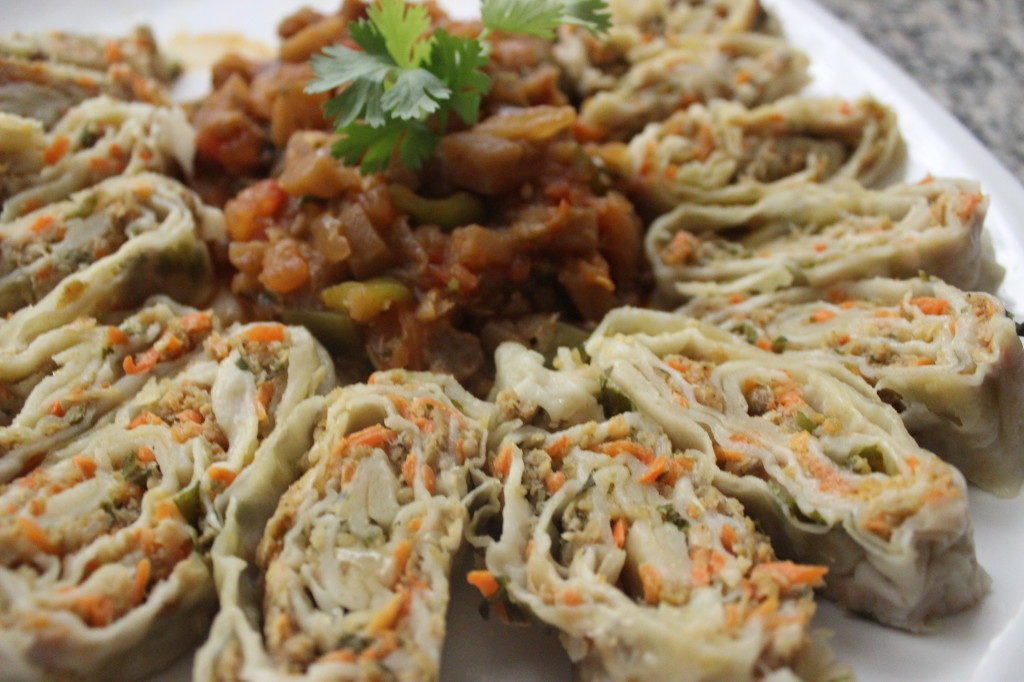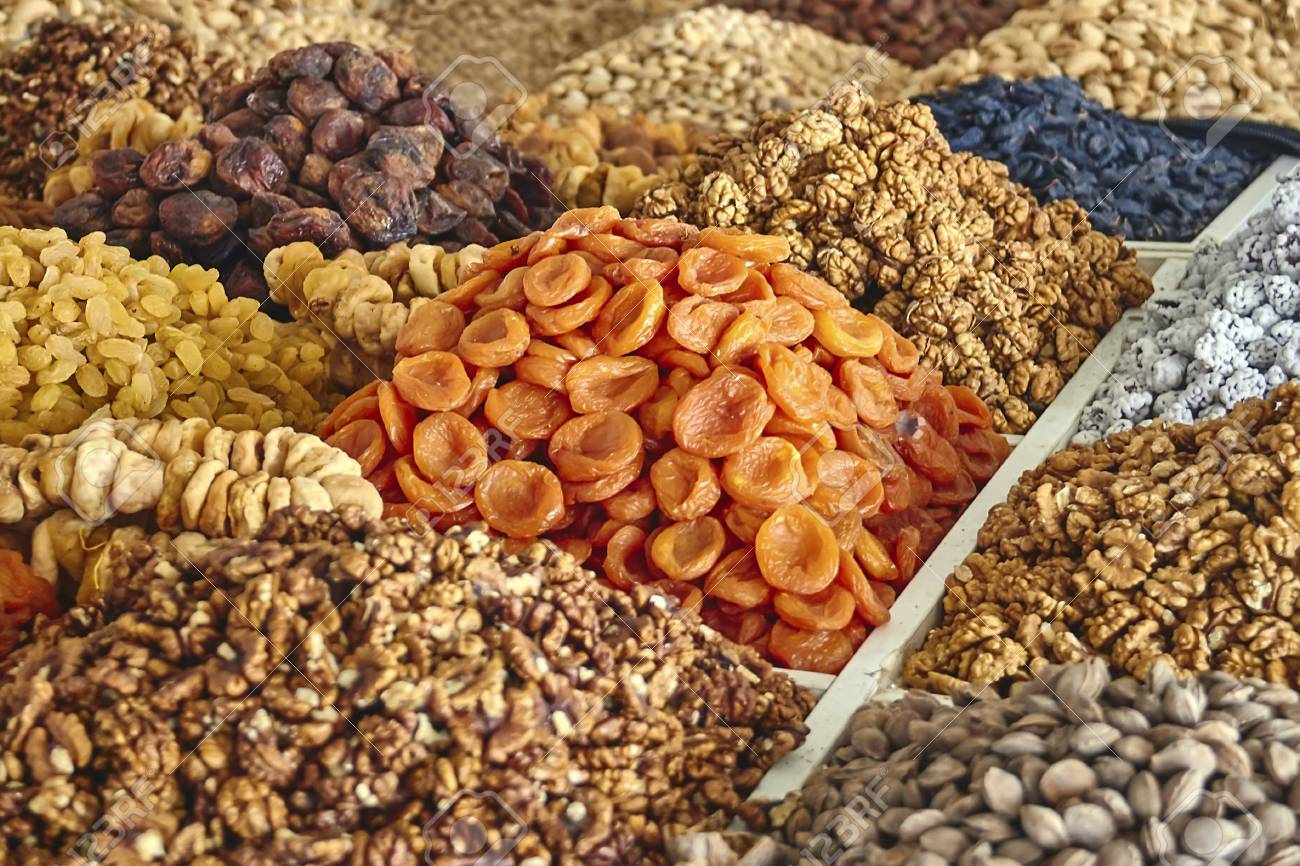Food in Uzbekistan is a way of life. The way Uzbek people treat cooking is the subject of careful study. Even the most scrupulous researches will not help to identify trends, rules and even more laws. These are recipes on emotions with a lot of nuances and requirements for the dish.
The Uzbeks are very hospitable and cheerful people. They are happy to serve the guests with dishes prepared by their distant ancestors. The food of Uzbek cuisine is open to the influences of other cultures, but each borrowed dish is prepared in its own Uzbek way.
Currently, modern gas and electric ovens, kitchen utensils and appliances are broadly used for cooking Uzbek food. However, traditional methods of cooking are still popular. An obligatory element of kitchen ware is a cauldron (usually of several types and sizes). Tandyr (clay oven) is almost an obligatory element, especially of rural places.

The traditional type of dishes, which serves Uzbek food plov and many other dishes is lyagan (large flat plate or dish). While eating Uzbek meal forks are used on rare occasions. If pilaf is not eaten by hand, then it is accepted to eat with a spoon. Other utensils used in the Uzbek cuisine are a kosa (deep bowl) and a piala (a cup for tea).
Uzbek food list
An important place in the Uzbek meals is occupied by hot soups (shurpa) on strong broth. As a rule, they are dense, spicy, with lots of vegetables and greens.
In the Uzbek tradition, it is customary to cook soups on low heat and salt at the very end. Unique soups of Uzbek food are mastava (from meat, rice and vegetables, which is served with sour milk, pepper and spices); mashkhurda (bean soup with rice, potatoes, onions, herbs and sour milk); mash-atala (thick soup of roasted fat, onion, carrots, beans and flour); moshubirinch (mutton, tomatoes, beans and rice); cholop (cold soup from sour milk, radishes, cucumbers and greens). Uzbek noodles are almost always cooked with meat.

Meat dishes seasoned with Uzbek spices are the most common among the second dishes of Uzbek meals. They are: pilaf, cutlets, shashlik, manti, kebab, lagman, samsa and all sorts of pies with meat, rice, pumpkin and other fillings. Meat is served with vegetable salads or meat is stewed with vegetables.Also, Uzbek national meals are characterized by the use of cereals and legumes (such as rice, jugara, wheat, peas). Vegetables are also popular. Primarily, these are pumpkin, turnips and carrots.
The Uzbeks are very respectful of bread. The main Uzbek bread is the flat cake “obi-non”. For the holidays patyr (flat cake with the addition of mutton fat) is baked. Bukhara bread is sprinkled with sesame seeds. In spring, the dough for obi-non is cooked on the infusion of fresh shoots of mint, dandelion, spinach, quinoa and many other herbs. On the lookouts cakes with butter and sour cream are prepared. Different additives are used in different regions of Uzbekistan, but the technology of cooking obi-non has not changed for centuries.

Uzbek sweets are a common thing in Uzbekistan. Here are almost 50 kinds of khalva. The Uzbeks prepare delicacies from nuts, fruits and cirups. The abundance of fruits and berries is used in Uzbek meals for the preparation of sweet compotes, medicinal infusions, refreshing sorbets. Melons and watermelons are independent desserts.
Eating traditional Uzbek food would be incomplete without Uzbek tea. For centuries in the teahouses serious questions and sincere conversations were conducted with a cup of aromatic tea. Gathering in the tea house is the traditional privilege of men.
Food Customs at Ceremonial Occasions
Uzbeks celebrate whenever possible, and parties usually consist of a large meal ending with palov. The food is accompanied by copious amounts of vodka, cognac, wine, and beer. Elaborate toasts, given by guests in order of their status, precede each round of shots. After, glasses are diligently refilled by a man assigned the task. A special soup of milk and seven grains is eaten on Navruz. During the month of Ramadan, observant Muslims fast from sunrise until sunset.

Basic Economy on Food
The majority of goods other than food come from China, Turkey, Pakistan, and Russia. It is very common for families in detached homes to have gardens in which they grow food or raise a few animals for themselves, and if possible, for sale. Even families living in apartments will try to grow food on nearby plots of land, or at dachas.
Uzbekistan Dry Food
Uzbek food is more similar to food found in Turkey, the Middle East, China and Muslim countries than food found in Russia. Because Uzbekistan is a Muslim country pork is hard to find but mutton and other sheep products and chicken are common. All parts of the sheep, including the eyeballs, brains, head and tail, are eaten. Mutton itself is often fatty. Beef, camel meat and goat meat is served in some places.
Round bread (lepyoshka) and rice are staples. Restaurant offer things lie shashlik (kebabs) and plov (pilaf). There is a good selection of melons, fruits, vegetables, dried fruits and nuts in the markets. Most are seasonably grown but the long growing season means that produce is available throughout the year. Commonly used spices include black pepper, black cumin, turmeric, dill, parsley, celery, coriander and sesame seeds.
Uzbek people have traditionally lived on meat and dairy products, including lamb, beef and horse meat. Russian dishes such as boiled chicken, Russian Salisbury steak, continue to endure in some places but are less common than in other parts of Central Asia. There are some backpacker restaurants, cafes and Korean restaurants. The best Uzbek food is served in homes, not restaurants, and these includes simple, working-class, unpretentious dishes. One of the nice things about some of guesthouses in Uzbekistan is that serve these kinds of meals.
Some Process of Dry food
Sun drying
This process beats the other methods in terms of cost due its inexpensive nature; using sun as its thermal source. However, there are many disadvantages associated such as the longer time required to dry, hot climate and daylight, and risk of invasion by animals and unwanted microorganisms.
Tray drying
Despite its poor re-hydration properties and shrunken appearance, this process requires a short period of time along with controlled humidity and heated air.
Freeze drying
Unlike the other drying methods, this method allows the dried mango to retain its shape, retain the highest color value, and provide a great rehydration property despite its high costs.
Vacuum microwave drying
This method provides better flavor retention, great rehydration, least nutrient loss and least color change among other thermal drying along with a faster drying rate compared to freeze drying.







